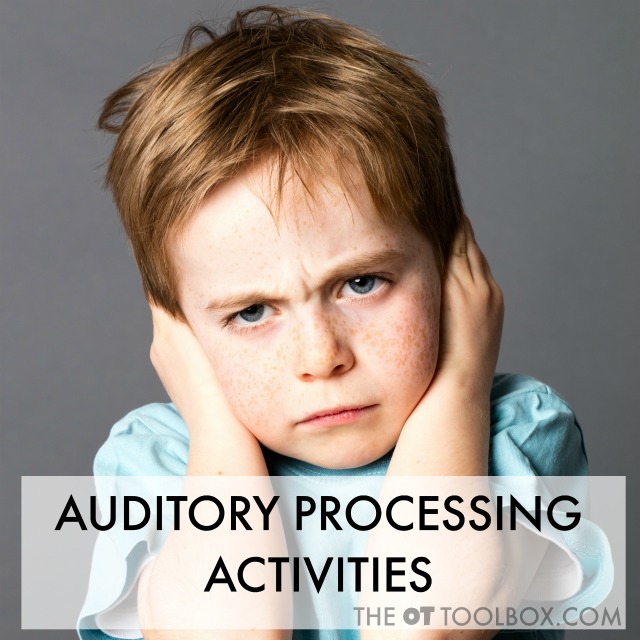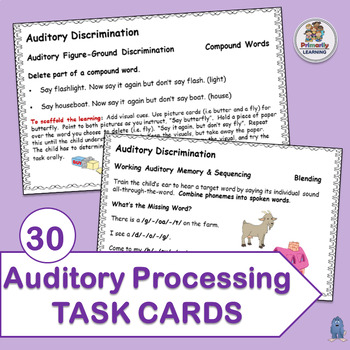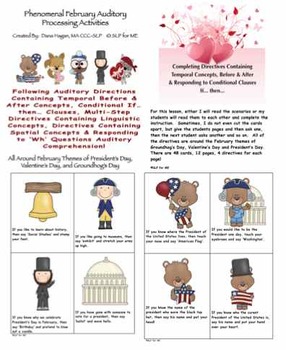


For example, some auditory association skills are: convergent naming, yes-no questions, auditory closure, and if/then conditional directions. Why? Because it encourages students to think about what they're hearing. I like working on auditory association even if that's not the student's specific goal. HOW DO I WORK ON AUDITORY PROCESSING SKILLS?įirst, you don’t need to focus on just one area at a time. Our students may be focusing on developing skills in any of these levels of the hierarchy, so it is important for us to understand. It is being able to process, understand, and recall information. This is the ability to understand longer and more complex sentences and passages, being able to follow directions, carry on a conversation, etc. It includes phonological awareness skills, such as identifying, blending, segmenting, and manipulating sounds.Īuditory Comprehension: These skills include not just hearing information, but being able to understand what you’ve heard. For example, understanding that barking means dogs. bat versus pat).Īuditory Identification: These skills involve being able to attach meaning to the sounds heard. Beyond that, it is being able to differentiate individual speech sounds (i.e. It is also being able to differentiate speech volume, pitch, etc. This includes the ability to detect sounds and the ability to localize sounds, or identify where they are coming from.Īuditory Discrimination: These skills include being able to differentiate sounds, whether it be speech sounds, animal sounds, environmental sounds, etc. Listening skills build a strong foundation for literacy and language learning, social relationships and musical ability.Auditory Awareness: These are the first skills when learning to listen. Find pictures of words that use the same beginning sound.Use nursery rhymes or riddles to work on rhyming words.Sing songs that teach concepts and help with memorization such as the ABC’s or days of the week.Allow for experimenting with playing instruments loudly, softly and with varying patterns.Make your own instruments like rain sticks and drums.Sing songs that require following directions such as Head, Shoulders, Knees and Toes or action songs like Wheels on the Bus.Hide an object that makes sound and hunt for the object.Children can close their eyes and listen to a sound made by an adult such as tearing paper or bouncing a ball.

These sounds can be matched to a picture for a version of BINGO for older children.

But for someone with an auditory processing disorder following through with those tasks could present a problem. “Pick up your shoes and put them by the door.” This seems like a pretty straightforward direction.


 0 kommentar(er)
0 kommentar(er)
